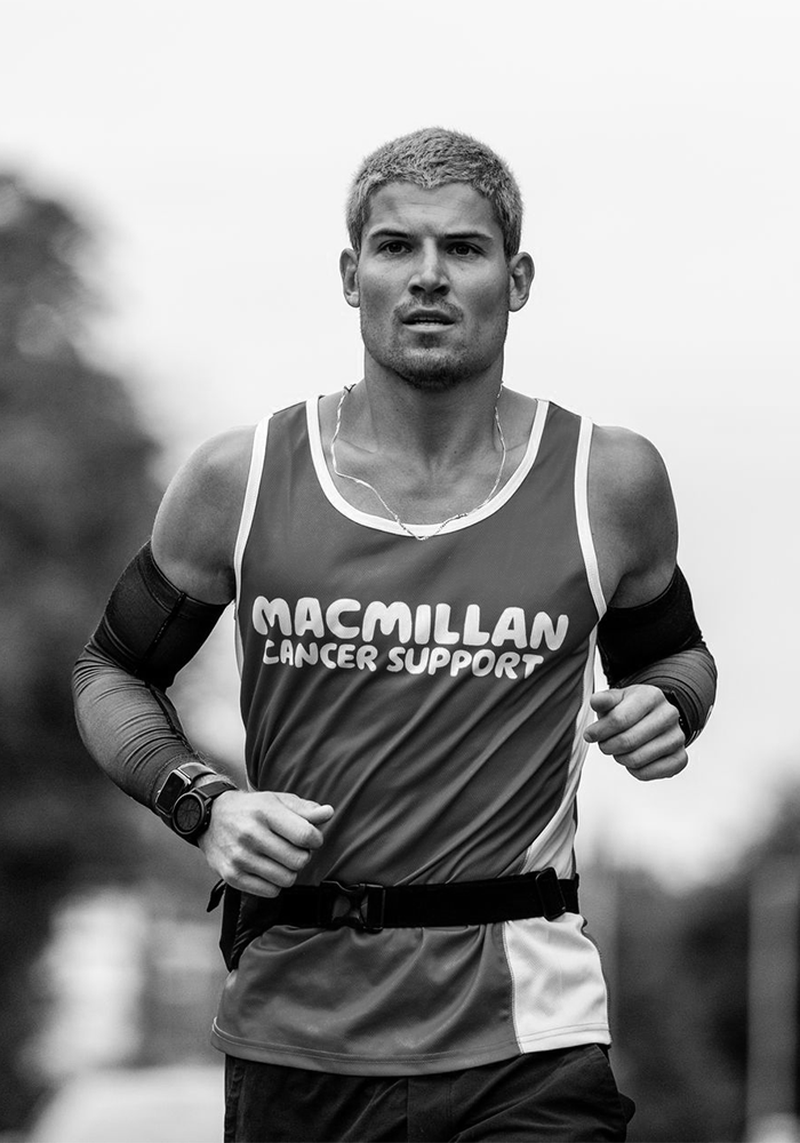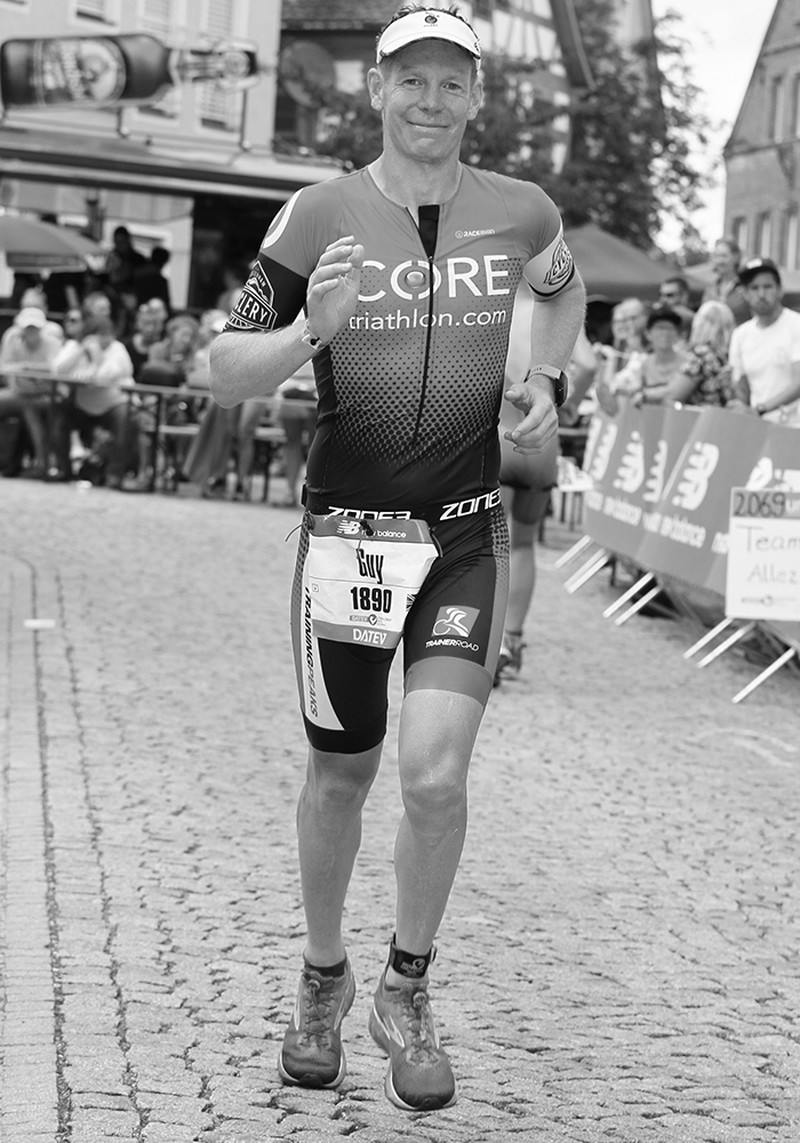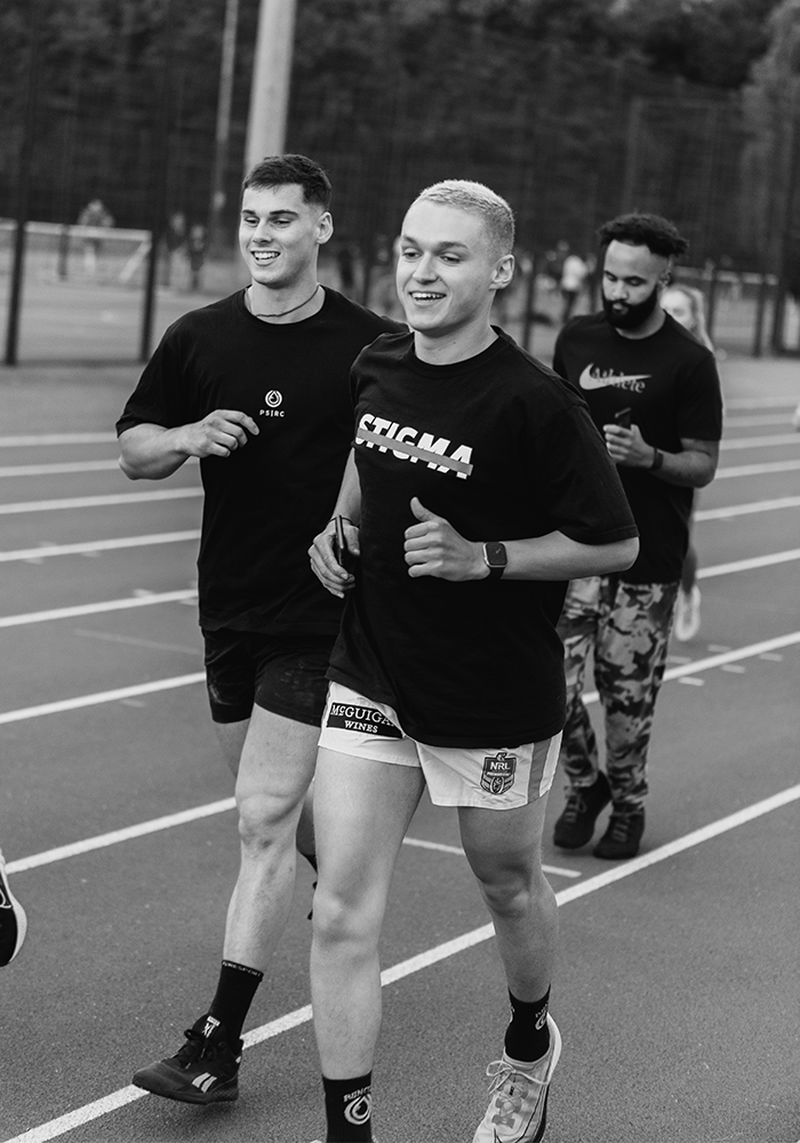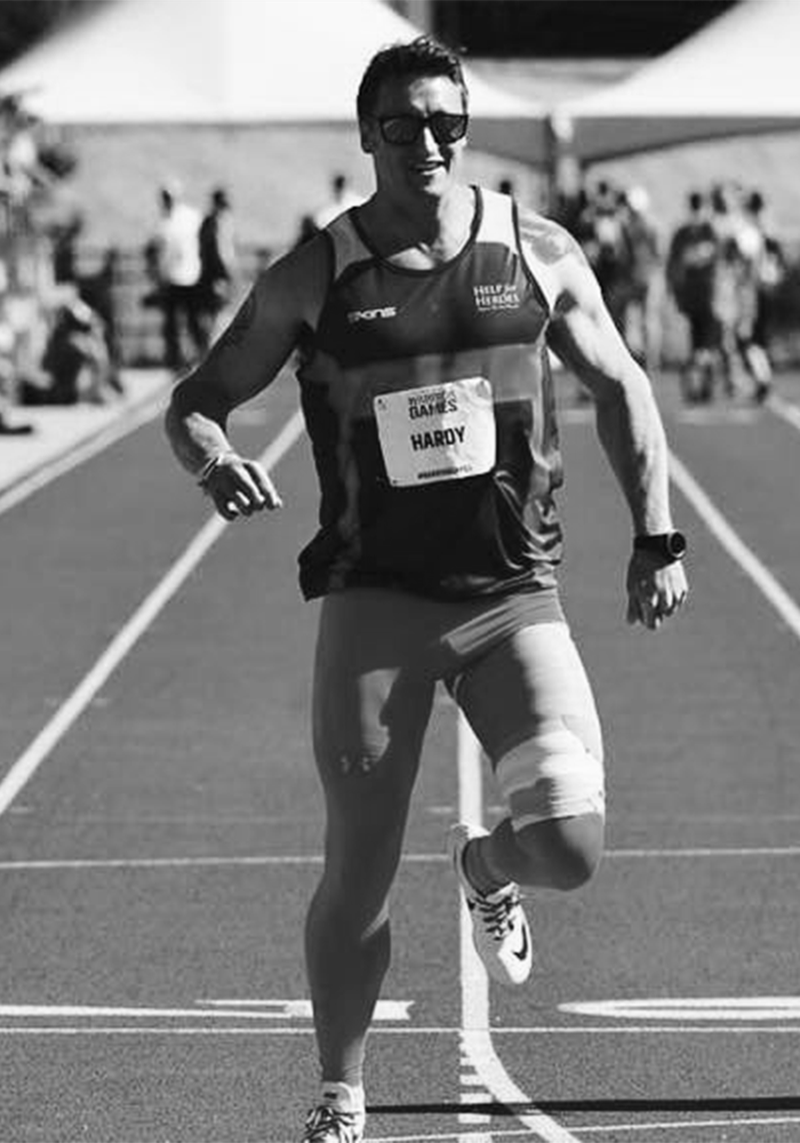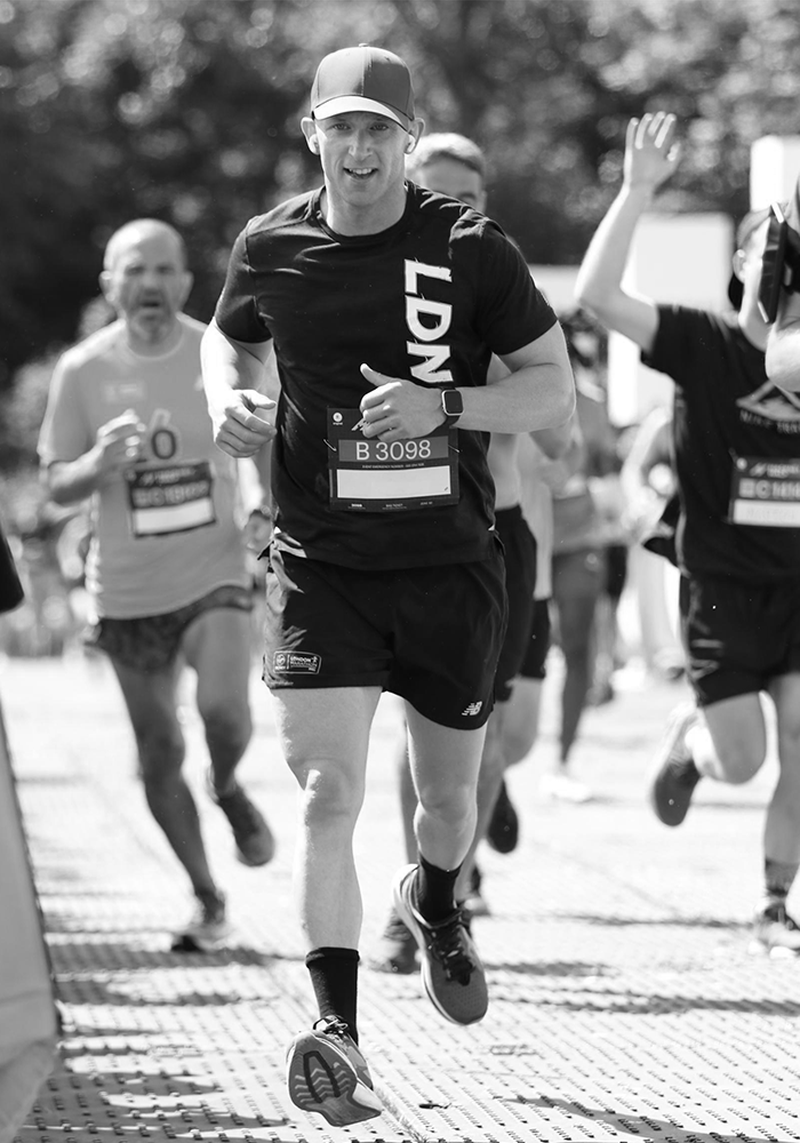5 Runners Share Their Marathon Tips
Will Goodge
ultra marathon runner & head coach at Puresport Run Club
I’ve run more than 100 marathons. It’s been a real mix – most of them have been unofficial marathons and part of bigger challenges, but my last and biggest was the 48 in 30. I ran 48 marathons in the 48 counties of England in 30 days. My fastest time for the distance was 2:50:01 and the slowest was just over ten hours, a real mixed bag.
I focus on four main sessions a week. When training, I want most of my miles to feel easy – in other words, keeping my heart rate at 70% of its maximum. I also factor in some intervals or speedwork on the track – which is a great way to adapt to feeling challenged and get your cardiovascular system working harder – and a tempo run for 40-80 minutes. The tempo run is around 15 seconds per mile faster than your marathon pace, which feels surprisingly tough. On a Sunday, I do my main session for 90-180 minutes. This is done at a slow, steady pace. Weighted strength sessions also keep me injury free.
Be proud of the stuff nobody sees. You’ll be prouder of the training than you will the main event – when there isn’t a crowd or finish line in sight, staying dialled into your training is what you value the most. Be proud of the early mornings and the everyday sacrifice.
If you can’t stomach gels, try Maurten. This Swedish brand does great hydrogels, which are better absorbed by the body. During a race, I’ll alternate between its Gel 100 and caffeine-based gels. If it’s hot, I’ll add some salt tabs to a bottle of water to replace electrolytes. When you sweat a lot, you lose salt, which can lead to muscle cramping, which no one wants on race day.
I always go vegan at least 48 hours before a race. This makes me feel better and lighter in my body and my stomach is always happier, too.
If you can run 10k, you can run a marathon. People are quick to fear distance running, and while a marathon is tough, we naturally sell ourselves short. When you take your mind off the notion that you need to run every step of the marathon, you realise you can complete the distance. You just have to sign up to believe in yourself.
Visit Puresport.co
Guy Whitby
co-founder of Presca Sportswear
My first marathon was an ultramarathon. It took just over nine hours. At this point, I had already done a couple of sprint triathlons and had signed up to an Ironman triathlon. Since then, I’ve done the Beachy Head Marathon – a very hilly off-road marathon that I finished in around four hours – and five marathons as part of long-distance triathlons. So much of it is in the mind. For my ultramarathon I had zero training plan and suffered intensely on the day, but it did prove you can achieve anything if you are bloody minded.
I’m not a natural marathon runner. I come from a team sports background and started endurance sports late in my 20s. My initial training plans were downloaded from the internet and based on building mileage each week and running on ‘feel’. But being new to the sport, the problem was I had no idea of what ‘feel’ was. I would always run harder than I should have at ambitious paces which left me frequently injured and fatigued. I have since joined running clubs, which is great for mental wellbeing, but having collapsed at the finish line of the Frankfurt Ironman, I decided it was sensible to enlist the support of a coach.
Understanding heart rate zones has been a game-changer. My training now works on cumulative build around three main running sessions: tempo sessions, short VO2 repeats and long runs. The long runs range from around 90 minutes to two-and-a-half hours. I never look at the distance, always vary the terrain and run at a slow, comfortable pace. Running is hard on the body – remember that and take time to build up your load.
Fuel is important. I recently did a test with Precision Nutrition, which works out how much salt you lose in your sweat. I top up lost electrolytes with Maurten hydro gels. My race brain isn’t the most sensible when it comes to nutrition, so I set an alarm to go off every ten to 15 minutes on my phone to remind me to eat or drink.
Enjoy the training. I’ve spent too much time stressing during training that I might not finish or might not be fast enough. At the end of the day, unless your livelihood depends on your race result, all the pressure is self-induced. Also remember that running slow on your long runs doesn’t mean you’ll run slow on race day. The freezing, rainy training sessions help your mental strength as much as your physical strength.
Visit PrescaSportswear.com
James Budd
architectural designer
Starting with a flat marathon is a good idea. Amsterdam, Rotterdam and Edinburgh are all great for first timers. Amsterdam was my first marathon in 2019 – I ran it in 4:00:03. I’ve since done a serious amount of running training with many unofficial half marathons and several full-distance training runs.
I wrote my own training plan. I collated information from various running websites and ran two to three times a week with a long run every weekend, building up slowly to a final 36km long run two weeks before the marathon. However, one thing I didn’t do enough of was strength work that complemented a running programme – I didn’t do enough core or mobility work either, both of which are important when it comes to being a strong runner. I now use Runna, which is an amazing app-based running coaching platform.
The last 10km will be tough. Think about the reasons why you are running and the people who have supported you along the way. One tactic someone told me about was to dedicate each of the final kilometres to a friend or loved one – it will make things easier.
Listening to your body is crucial. Don’t run through any niggling injuries. If you get a niggle, you may think you just need a good stretch, but you’re far better off resting that area of your body for a few days.
Socks are as important as trainers. It goes without saying that you should buy the best shoes you can afford that fit your feet well, but a decent pair of anti-slip running socks is also essential. When it comes to trainer brands, I rate Asics and Hoka for long-distance runs and Nike for shorter runs.
You can’t beat a bowl of porridge before a run. Oats provide slow-release energy – I love having a bowl of oats with banana and peanut butter a few hours before a long run. Trek bars and Sis gels are great for on-road snacks.
Follow @JamesBudd
Darren Hardy
ex-soldier & endurance athlete
Running is my therapy. I was discharged from the British Army in 2017 having been diagnosed with PTSD and found running soon afterwards. Last year, I ran five marathons back to back, and earlier this year I ran ten marathons in 100 hours. I describe myself as an ultra-endurance athlete – I’m not a natural marathon runner and far prefer the longer endurance challenges. My PB for a standalone marathon is 4:20.
Train for life, not just one event. I appreciate not everyone has the luxury of training like this, but because of the vast array of strength and endurance challenges I undertake, I train six to seven times a week. I’m up at 4:20am doing cardio before heading to the gym for a strength training session.
When you’re injured, cut back on training. It may sound basic but when you’re deep in training it can be tricky to follow this advice. I recently tore my calf muscle and reduced my training significantly until I’d fully recovered. Give your body what it needs and you’ll reap the rewards.
Long-distance running requires serious fuel. I aim for 5,000-7,000 calories a day, and my go-to pre-run meal is four eggs with a smoothie made with oats and protein powder. Nutrition plays a key part in my training and performance on race day. I’m strict about the quality of supplements I use – my go-to brand is Battle Ready Fuel. The Military Whey is made with two forms of protein and contains digestive enzymes to aid digestion and maximise nutrient absorption, while the Pre-Combat contains a blend of vitamins, minerals and amino acids designed to supercharge energy levels and increase endurance performance.
Your body is capable of more than you think. Never be afraid of something you think you can’t do, because chances are it’s easily within your reach. It all comes down to your mindset.
Visit BattleReadyFuel.com
Joe Sweeney
PT & strength coach at Transition Zone
I ran the London Marathon in just under four hours. I was aiming for a sub 3:30 but I was struck down with a heavy cold two weeks before so had to reassess my goal. I settled for a sub-four marathon and have since run two half marathons, both under two hours. Recognise that issues may come up. One of the main reasons to give yourself a decent amount of training time prior to a race is that, no matter how perfect your training plan, life can get in the way. Don’t beat yourself up – a generous training schedule allows you to surmount these detours and still be where you need to be on marathon day.
Recovery runs are key. The biggest thing many marathon newbies don’t anticipate is that most of your training should be at a very slow pace. While some runs will be performed at your race pace – or faster during interval training – the bulk of your runs, especially the longer ones, should be at an easy pace that’s actually slower than your projected marathon time. Factor in some easy recovery runs, too. They will reduce lactic acid build-up and increase blood circulation to aid muscle recovery.
Strength training is important. It’s easy to think that if you want to become a better runner, you need to run more, but a lot of it comes down to strength training. I ran three or four times a week and incorporated two strength sessions. This is key for injury prevention, and for building power and endurance for the duration of the run.
Regular massages will help. First of all, a sports massage feels amazing, but it also offers a number of benefits during and after your training runs. A good massage will aid circulation, relieve tension, aid the breakdown of scar tissue, and allow oxygen and nutrients to reach your muscle cells faster to remove waste products. Taking the time to stretch properly after a run is also crucial.
Do your research when it comes to trainers. I used Nike’s Vapor Fly Tempo for training and a pair of New Balance 1080 on race day. In hindsight, I regret changing my trainers – I went for comfort over performance which wasn’t the smartest of ideas. Once you’ve found a shoe that works for you, stick with it.
Visit TransitionZone.co.uk
Shop These Expert Approved Products...

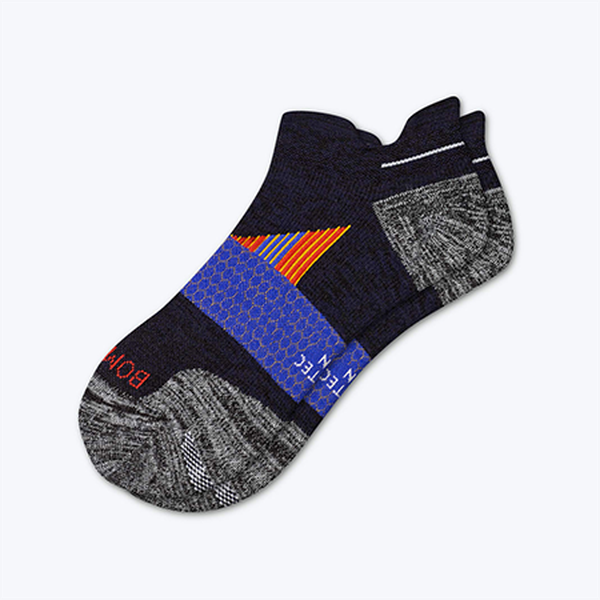
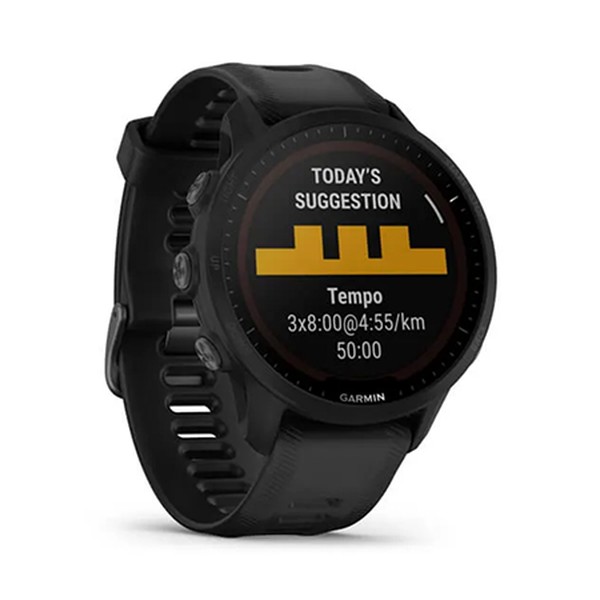
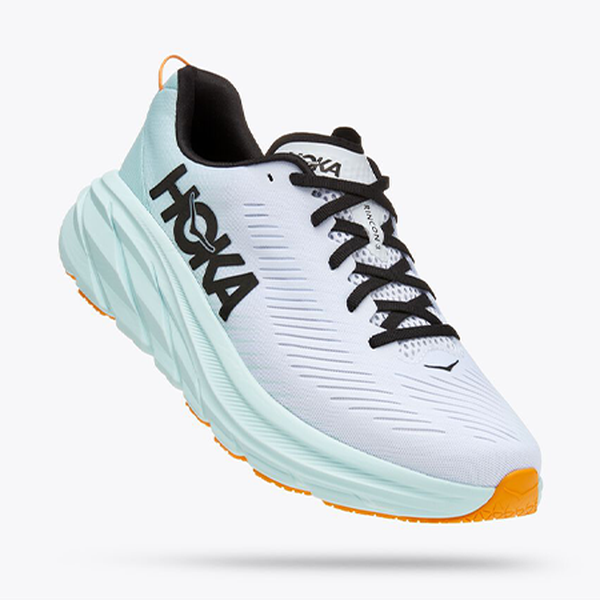

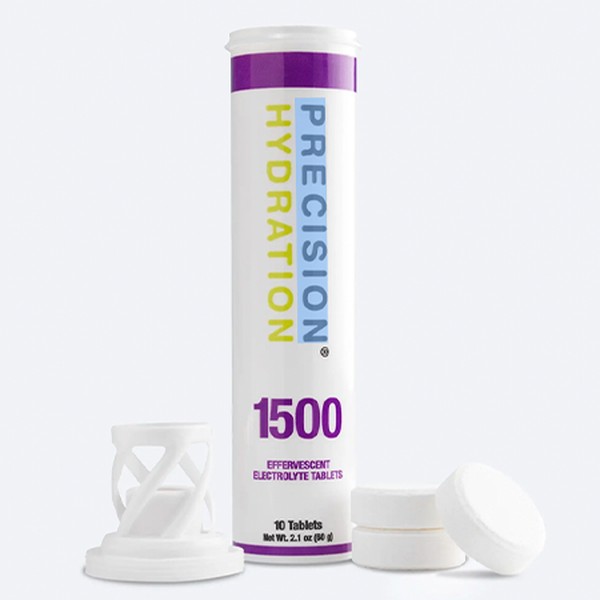
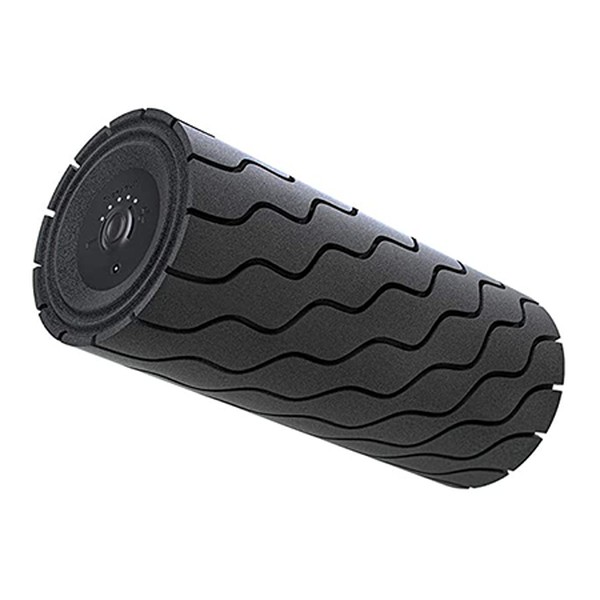
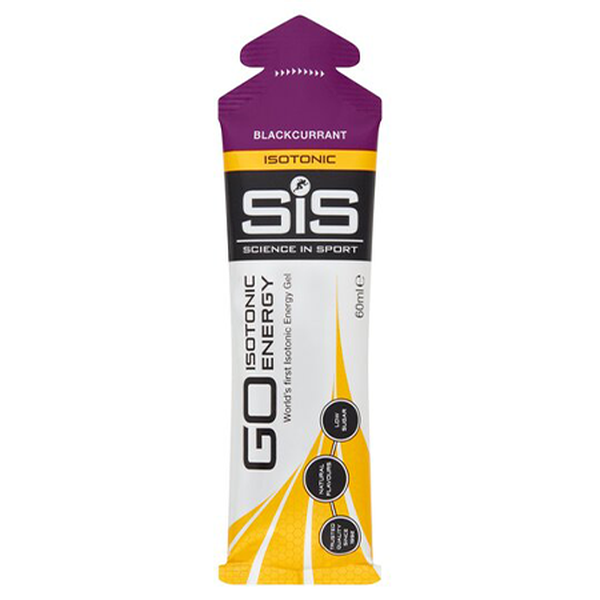
All products on this page have been selected by our editorial team, however we may make commission on some products.
DISCLAIMER: We endeavour to always credit the correct original source of every image we use. If you think a credit may be incorrect, please contact us at [email protected].

